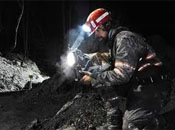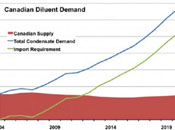
"North America is at the forefront of a sweeping transformation in oil and gas production that will affect all regions of the world…" said IEA Executive Director Maria van der Hoeven in today's press release.
"The WEO finds that the extraordinary growth in oil and natural gas output in the United States will mean a sea-change in global energy flows," the press release continued. "…the United States becomes a net exporter of natural gas by 2020 and is almost self-sufficient in energy, in net terms, by 2035. North America emerges as a net oil exporter…"
All of this good news is based upon the continued rapid development of America's shale gas and shale oil resources through the use of fracking.
U.S. Energy Outlook: Fracking a Major Factor
As discussed in detail by Money Morning Global Energy Strategist Dr. Kent Moors, developing the oil and gas trapped in shale is expensive and energy intensive.
It also requires vast amounts of water.
Recovering energy through fracking requires water, sand and chemicals to be injected into shale under high pressure, fracturing the rock to release the gas and oil trapped within it. There are often a couple of miles of bedrock between the hydrocarbon-bearing shale and groundwater.
"Water is essential to the production of energy, and the energy sector already accounts for 15% of the world's total water use," wrote the IEA. "Its needs are set to grow, making water an increasingly important criterion for assessing the viability of energy projects. In some regions, water constraints are already affecting the reliability of existing operations and they will introduce additional costs."
The argument over energy vs. water frames the debate over fracking here in the Catskill region of New York.
The remaining content is exclusively for Money Morning subscribers. To gain access, follow the link below to reload the page and enter your email address to get free access.
Jeff Uscher
Money Morning























































